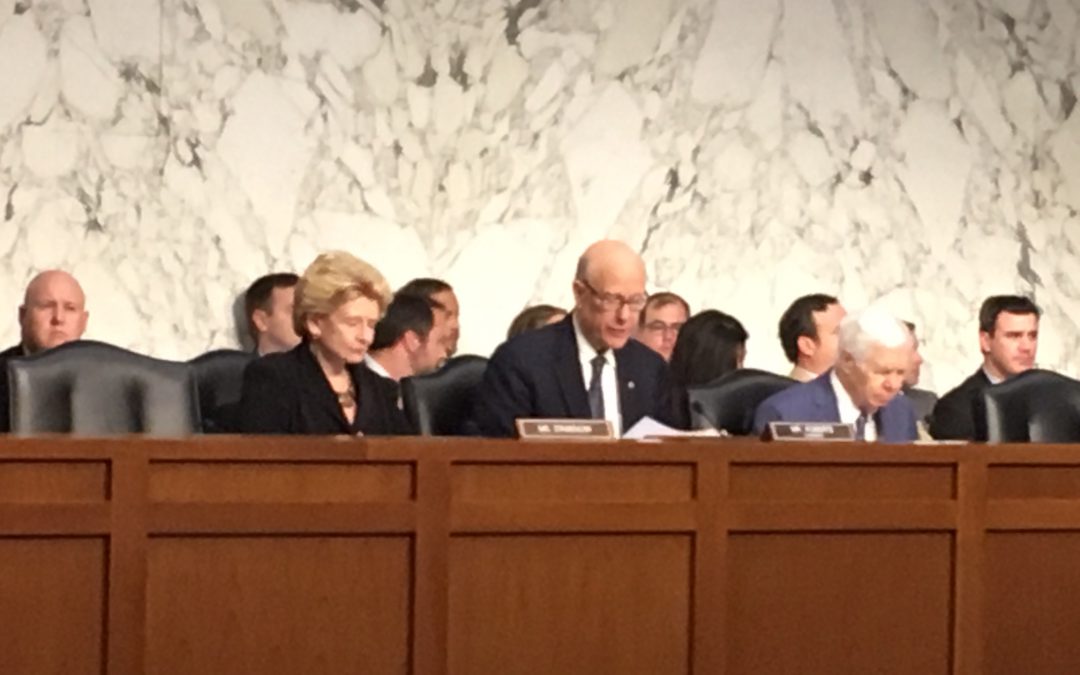WASHINGTON-Concerned about possible Trump administration budget cuts at the Department of Agriculture, advocates argued Thursday for preserving conservation programs as part of the 2018 Farm Bill.
As lawmakers consider priorities of the bill, industry analysts told the Senate Agriculture Committee that conservation programs are especially necessary now. They said such programs are popular given historically low commodity prices and as foresters face challenges such as fires and deforestation.
Panelists from the forestry, cattle ranching, farming and animal agriculture industries testified that the millions of acres dedicated to conservation programs nationwide provide a lifeline to struggling farmers, ranchers and foresters in devastated rural areas.
Many programs are backlogged with applicants, with some programs seeing as much as a 30 percent year-over-year increase in enrollments, said Jimmy Bramblett, deputy chief of programs at the Natural Resources Conservation Service.
This comes as the Trump budget proposes to cut agriculture conservation programs by $84 million.
“Conservation programs have been at the very cornerstone of what we do,” said Adam Sharp, executive vice president of the Ohio Farm Bureau, in prepared remarks. “Part of [our] partnerships include working with organizations such as the U.S. Department of Agriculture’s (USDA) Natural Resources Conservation Service (NRCS) and with conservation tools provided through the Farm Bill such as the Environmental Quality Incentives Program (EQIP).”
In the 2014 farm bill, conservation program funding accounted for only 7 percent of the total budget and does not pose as large a challenge to the deficit as the 10-year, $756 billion Supplemental Nutrition Assistance Program, (food stamps), which receives 77 percent of Farm Bill funding, 2014 Farm Bill documents show.
USDA conservation programs such as the Conservation Reserve Program (CRP) work to promote voluntary conservation while protecting and enhancing the environmental stewardship of working farmlands. Farmers and ranchers that register with their local farm services agency get compensated by the USDA a certain amount per acre to plant pollinator habitat or grasslands that preserve species and/or improve the environment.
“CRP first appeared in the 1985 Farm Bill,” said Misty Jones, the USDA director of conservation.. “CRP improves water quality, spurs recreation, tourism, and results in 23.5 million acres nationwide and 7.3 million acres under continuous enrollment.”
Committee Chairman Pat Roberts, R-Kansas, underscored the difficulty of budget priorities this year. “Congress will have difficult decisions to make as it tries to figure out how to address the needs, but I urge everyone, at the very least, to protect conservation and consider working within the confines of the existing programs,” Roberts said.
Christopher Topic, director of the Restoring America’s Forests project at the non-profit Nature Conservancy, testified that programs such as the Agriculture Department’s Forest Legacy Program help protect forests on private land and are a necessary public-private partnership in preserving forests for future generations. The federal government may fund up to 75 percent of Legacy Program costs, while at least 25 percent comes from private, state or local sources, according to the U.S. Forest Service. These programs are especially relevant, as 50 percent of the nation’s forests are on private lands.
“The public can provide input for the committee about 2018 Farm Bill priorities by going to ag.senate.gov,” Roberts said. “That link will be open for five business days following the hearing for public input.”

